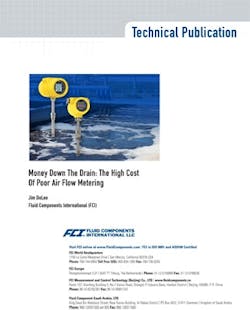Money Down the Drain: The High Cost of Poor Air Flow Metering
Activated sludge systems have been cornerstones of wastewater treatment for more than 100 years. This biological process uses suspended-growth microorganisms to break down and consume organics and remove nutrients from the wastewater. The heart of the process takes place in aeration basins, where the microorganisms need to receive sufficient oxygen to stay alive.
While there are various methods of aeration, diffused air is the most common. Large blowers push compressed air through a pipe distribution and diffuser system. Bubbles rise from the bottom to the top of the basins, transferring oxygen to the activated sludge.
The energy costs associated with this process often are the largest non-labor-related expense a wastewater treatment facility has to bear, so it is imperative for operators to manage their airflow and optimize efficiency.
Click below to download this whitepaper.
